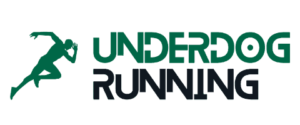This post contains affiliate links.

When I ran my first marathon it was during the covid pandemic so organised races weren’t allowed. Because of this, I chose to run a marathon over a very muddy old trail. It’s safe to say, the ground was nowhere near flat. Muddy hills and rough ground made it difficult to keep up a steady pace. This got me wondering though, what could be considered a flat marathon.
There is no universal rule for what can be considered as a flat marathon. However, the flatness of a marathon is usually measured through elevation – the height or depth the ground has throughout a marathon in reference to a fixed point – usually sea level. The smaller the elevation gain and loss, the flatter the marathon. Therefore, an elevation of 0 would be the ideal flatness of a marathon.
What Runners Think
According to the LA Times, the LA marathon is relatively flat and has a few small hills but mostly consists of the flat street. The LA marathon is reportedly 950 feet in elevation. So I decided to use this as an average and hold a poll with 51 runners to get their thoughts. The results are in:
| Choice | Votes (%) |
| A flat marathon is under 900 feet | 40 (78.4%) |
| A flat marathon can be over 100 feet | 4 (7.8%) |
| A flat marathon is around 900-1000 feet | 7 (13.7%) |
Interestingly, almost 80% of runners believed that flat marathons should be under 900 feet. But I suppose it makes sense seeing as the lower elevation, the flatter the marathon.
The Flattest Marathons In The World
Speed is also a pretty good way of measuring how flat (or easy) a marathon is. According to this great article by Fit and Hungry, there are some pretty flat and fast marathons throughout America. To get a better idea of their typical elevations, I did some research and put together the table below.
Some important points about this table. Elevation can get a little tricky when it comes to running. To make this data as accurate as possible, I’ve only included data for marathons that have clear elevation gain and elevation loss – feet ascending above sea level and feet descending back to sea level.
| Marathon | Elevation |
| Chevron Houston Marathon | Elevation Gain 84 Feet / Elevation Loss 23 Feet |
| Surf City Marathon | Elevation Gain 371 Feet / Elevation Loss 362 Feet |
| Napa Valley Marathon | Elevation Gain 564 Feet / Elevation Loss 867 Feet |
| Snickers Marathon | Elevation Gain 555 Feet / Elevation Loss 564 Feet |
| Revel Mt Charleston Marathon | Elevation Gain 169 Feet / Elevation Loss 5247 Feet |
| Bayshore Marathon | Elevation Gain 629 Feet / Elevation Loss 583 Feet |
| Fargo Marathon | Elevation Gain 260 Feet / Elevation Loss 260 Feet |
| Mountains 2 Beach Marathon | Elevation Gain 536 Feet / Elevation Loss 1284 Feet |
| Revel Big Cottonwood Marathon | Elevation Gain 304 Feet / Elevation Loss 5550 Feet |
| Steamtown Marathon | Elevation Gain 542 Feet / Elevation Loss 1496 Feet |
| Chicago Marathon | Elevation Gain 243 Feet / Elevation Loss 242 Feet |
| California International Marathon | Elevation Gain 663 Feet / Elevation Loss 1003 Feet |

Pros Of Running On A Flat Marathon
- Fast- Do a quick search online for the flattest marathons and you’ll soon see a few lists of the fastest. This isn’t surprising. After all, no slogs uphill certainly mean being able to run quicker. Furthermore, runners don’t need to watch their steps when running downhill. If your number one goal is to complete a marathon as quickly as possible then finding a flat one is a great place to start.
- Better For Joints- Especially when it comes to elevation loss. Going downhill generally puts more pressure on a runner’s joints due to the increased force of gravity. By running on as flat a surface as possible, runners can avoid putting so much pressure on their joints.
- Great For Beginners- Forgetting about potential obstacles such as rough terrain and the climate, which can also have an impact on a marathon. flat marathons are generally easier than marathons with a lot of elevation. For runners who are simply hoping to finish a marathon, finding one with as little elevation as possible is crucial.
- Less Risk Of Injury- Marathons that have a lot of elevation gain and elevation loss generally have an increased risk of injury. This is especially true for runners who don’t have a lot of experience in running hills. Falling is usually the highest risk associated with running uphill and downhill as it can easily lead to anything from cuts and scrapes to fractures and broken bones. A flat marathon can minimise this risk.
Cons Of Running On A Flat Marathon
- Elevation Has Physical Benefits – Before we decide that elevation is a terrible thing that all marathon runners should avoid, it’s important to think of its benefits. Running uphill and downhill helps runners to build more on muscles throughout the body that they otherwise wouldn’t be able to. Examples include the quads and hamstrings. Hey, if you’d like to know more about the benefits of running on elevated ground. Check out this article I wrote.
- Boring – Many people run a marathon to test their mental limits and challenge them to perform at their best. Put simply, for some people, a marathon is supposed to be tough. So choosing an easy and flat marathon isn’t just going to be boring, it’s also going to stop you from performing at your best.
- Limited – Whilst there is a great list above for flat marathons to choose from. Most marathons out there come with some level of elevation. By being afraid of inclines and declines and maybe even altitude, runners miss out on all of the great experiences that other marathons have to offer.
The Best Surface For A Marathon
If you’re looking for a flat marathon that you can do with ease then you’re probably also interested in the kind of surfaces that you’ll be running on. Marathons can vary from consisting largely of different types of terrain to just a single one. Examples include grass, asphalt, gravel and sand.
The Best Surface For A Flat Marathon
As a general rule, runners focused on running as flat a marathon as possible would do well on something like tarmac or concrete. Concrete generally comes with less bumps and dips but at the same time can be harsher on your feet. Concrete is also easy to come by, making it really easy to train on. Many runners use the road when training on concrete because it’s great for speed. To find out more about running on the road, check out this article I wrote.
The Best Surface For An Injury-Free Marathon
If you’re less worried about running a fast and flat marathon and more worried about making sure you finish the marathon in one piece, grass is generally a better idea. Grass can make it harder to transition from one foot to the other. So you can expect to finish the marathon at a slower time. However, grass also absorbs a lot of the impact from a runners foot meaning that less strain is put on the body and there is less risk of injury.
If you’re interested in learning more about the differences between running on grass and running on concrete, check out this article. (Insert Link)
The Best Overall Surface For A Marathon
If you’re less worried about running a fast and flat marathon and more worried about making sure you finish the marathon in one piece, grass is generally a better idea. Grass can make it harder to transition from one foot to the other. So you can expect to finish the marathon at a slower time. However, grass also absorbs a lot of the impact from a runners foot meaning that less strain is put on the body and there is less risk of injury.
If you’re interested in learning more about the differences between running on grass and running on concrete, check out this article. (Insert Link)
The Best Shoes For A Flat Marathon
Assuming that you’ve found a flat marathon then you may now be wondering what kind of gear you should arm yourself with.
When running a flat marathon, runners can afford to worry less about protection on their feet and focus more on performance. For this reason, road running shoes or even minimalist running shoes are a great place to start.
For road running shoes, I would recommend a pair of these Brooks Ghost Shoes. Brooks has been the only brand of running shoe I’ve ever needed for road running and they’ve never let me down. These shoes are made for a smooth and easy run without having so much material that it gets in the way of the runner’s performance. I think the thing that really interests me about these shoes is that they come with a segmented crash pad, meaning that they can take a lot of the shock out of the foot that runners get from running over the road and other hard surfaces.
If you want to take running shoes out of the equation almost completely for your flat marathon, I would recommend a pair of these Oranginer Barefoot Running Shoes. Complete with a wide toe box that lets you spread your feet apart naturally, runners can feel as if they are taking on a flat marathon completely naturally with the added protection that this minimalist running shoe provides.
Is It Better To Run on Flat Surfaces?
Running on flat surfaces definitely has its fair share of pros and cons. However, it isn’t necessarily better to only run on flat surfaces. Running on all different kinds of surfaces can make a runner’s body adaptable and stronger. The trick is to moderate your runs and balance things out evenly so that you can minimize the risk of running in different areas and maximize the reward.
Still wanting to know more about flat surfaces compared to other surfaces? Check out this video from, The Runner:

